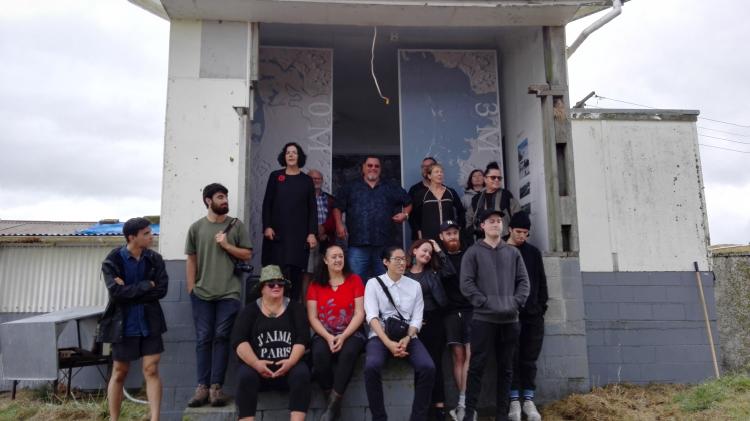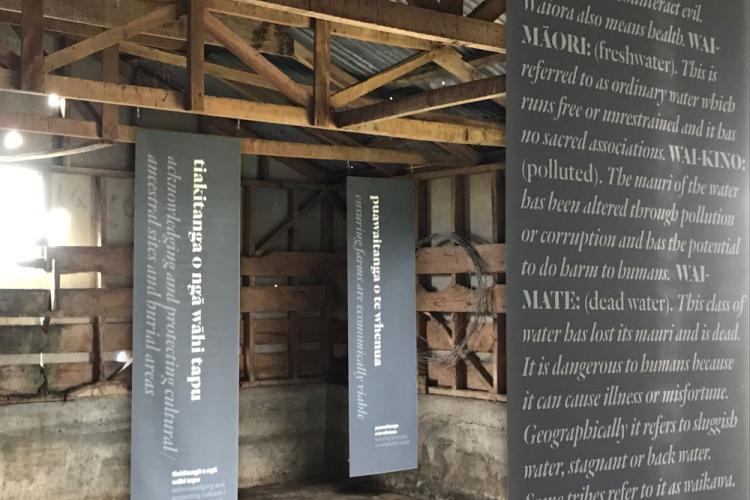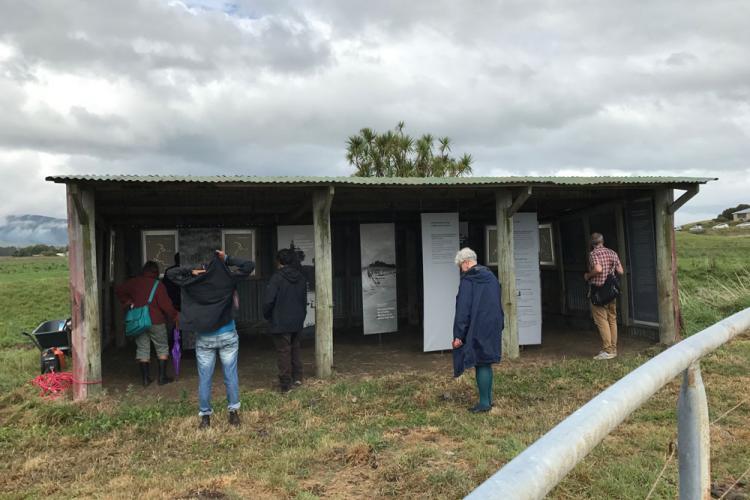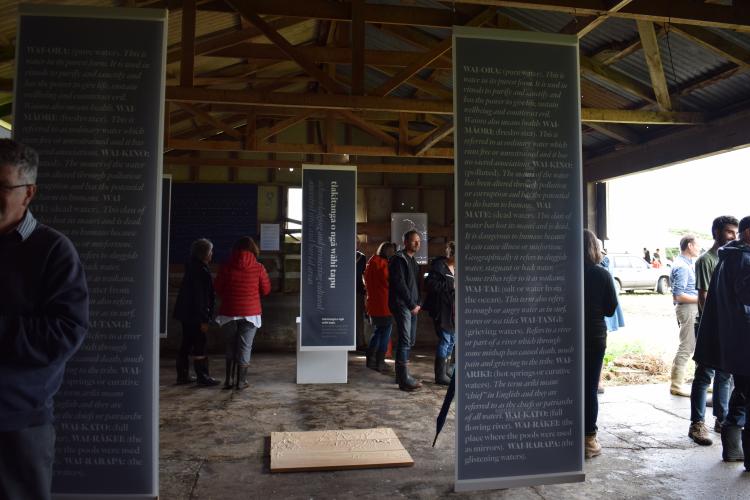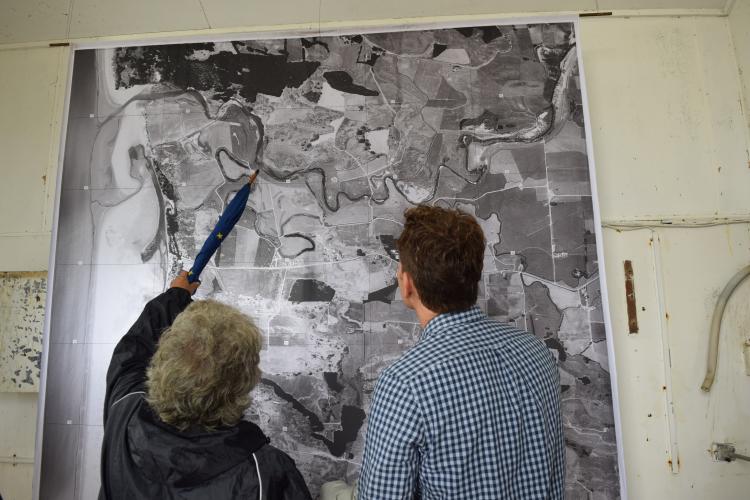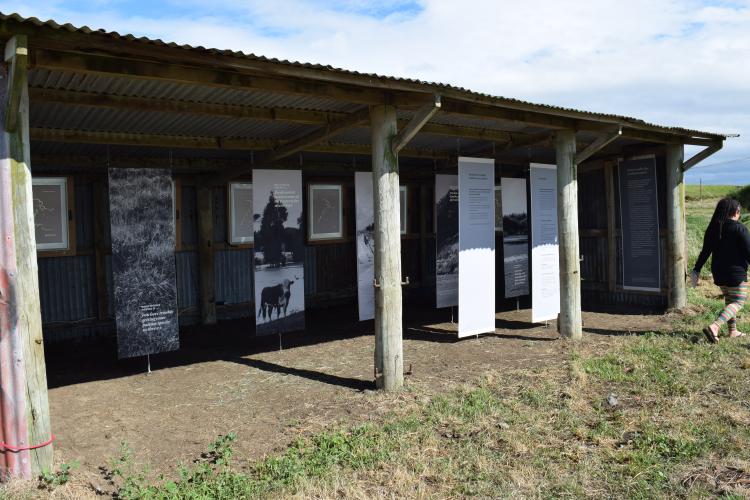- AUTHORThe third Wai o Papa Exhibition: A project of hope for Māori Coastal communities
- May 10 2017
The third Wai o Papa Exhibition: A project of hope for Māori Coastal communities

One Deep South Challenge project, within the Vision Mātauranga programme, has been exploring adaptation strategies to address climate change impacts on coastal Māori communities.
Using design methodology, this project takes a serious look at the potential economic risks to climate sensitive industries. The final hui and exhibit offers a model of participation and engagement that can assist communities to understand and move forward in a changing climate. Artist and researcher, Dr Huhana Smith, who has lead this team for 18 months shows us how the path forward can be a positive one, which continues to sustain the people and make dynamic use of the land.
Adaptation strategies for coastal Māori communities
Climate change will change conditions that will affect traditional land-use and practises. This project collaborated with local iwi and hapū to address the implications of climate change on two Māori coastal farms and a whānau trust, and consider the cultural, economic and ecological issues to develop culturally-appropriate adaptive options moving forward. These practices will help Māori farming communities be more self-reliant, less vulnerable and therefore more resilient. Huhana explains, “we’ve been building the ideas of what iwi and hapū would like to see from a cultural context, and an economic context, with the designers bringing their ideas and their thoughts and processes to the projects. We’ve been able to get some good cross-cultural dialogue and collaborative work.”
Science+Design+Art – an exhibition of adaptive strategies
As an artist and former senior curator, Huhana is well acquainted with the power of visual images to engage with the audience, and recently produced a visually rich exhibition Whakatairangitia, Rere ki uta, Rere ki tai, held in Kuku in March, reporting this work back to the community. This was not a regular research report or community event. The science, the process and the potential future strategies were presented to the community, land owners and trust members in an exhibition held on the farm, by the Kuku Stream in a disused milking shed with surrounding farm buildings to provide the real-life backdrop for the effects of climate change on this community.
Masters students at Victoria University’s School of Architecture engaged in the project (supported by professional firms Studio Pacific and Isthmus Group, Wellington) as a case study that incorporated both understandings of kaupapa Māori and climate change risks. Professor Penny Allen said, “The students were asked to think carefully about how climate change was going to affect those coastal lands, and what that might look like in hundred years and to create a vision for rejuvenation within the constraints of climate change, thereby helping Māori farmers and shareholders adapt in an economically viable way.”
During the design process, many experts were invited to talk to the students and discuss things that might impact their design solutions. An integral component was spending time listening to the people and exploring the land in the Horowhenua. For Masters student Yota Kojima this was essential to the creative process. “The site is currently covered in pasture, with wetlands, streams and rivers. We were asked to look at climate change issues such as sea level rise as a catalyst for environmental restoration and more importantly, cultural restoration.” Yota focussed on Māori cultural norms for inspiration. “The place of food in Māori culture is much like other cultures such as Japanese. It’s more than just feeding the community, but also has cultural and spiritual associations.”
The design process raised many possibilities and alternatives, that could see the people moving from dairy to other types of farming such as algae farming, green lipped mussel or fish hatcheries. Land based options included sustainable cash crops, such as flax and mānuka honey from bees.
Vision Mātauranga
The hui also provided an opportunity for the six Vision Mātauranga project leaders to come together from various parts of New Zealand, learn from each other and share challenges and progress. Each leader was given time at the hui to talk about their projects from water security in the northern regions, capturing traditional weather and climate forecasting expertise in in the South Island, and the opportunities for using narratives of Māori navigation to Antarctica to shape climate change conversations.
Darren Ngaru King, the programme lead for the Vision Mātauranga Programme in the Deep South Challenge, is proud of what the programme has achieved in a short space of time. “This is the first time that there have been six concurrent science projects focussed on ways that iwi, hapū and Māori business will deal with climate change and adaptation.”
A project of hope
Huhana calls it a project of hope, that focusses on challenges as a catalyst for positive change. “All in all, this project is about how a range of specialists can come together really well with iwi and hapū and help them cope with something like climate change. It’s not just the Horowhenua and Kāpiti Coast. It will affect all of New Zealand. And you know, together, that expertise and willingness to work closely together with help forge a better understanding and accelerate the adaptations we need to put into place now.”
We all have something to learn from tikanga Māori and the paradigm of kaitiakitanga that carries a responsibility of active stewardship for future generations, whilst providing for today.
Now at The Dowse, Lower Hutt
The next iteration of Whakatairangitia, Rere ki uta, Rere ki tai is now on display at the Dowse Art Museum until 30 July 2017, as part of the exhibition
This Time of Useful Consciousness—Political Ecology Now!
A talk given by Penny Allen and Huhana Smith will take place on Saturday 20 May 2017 at 3pm
